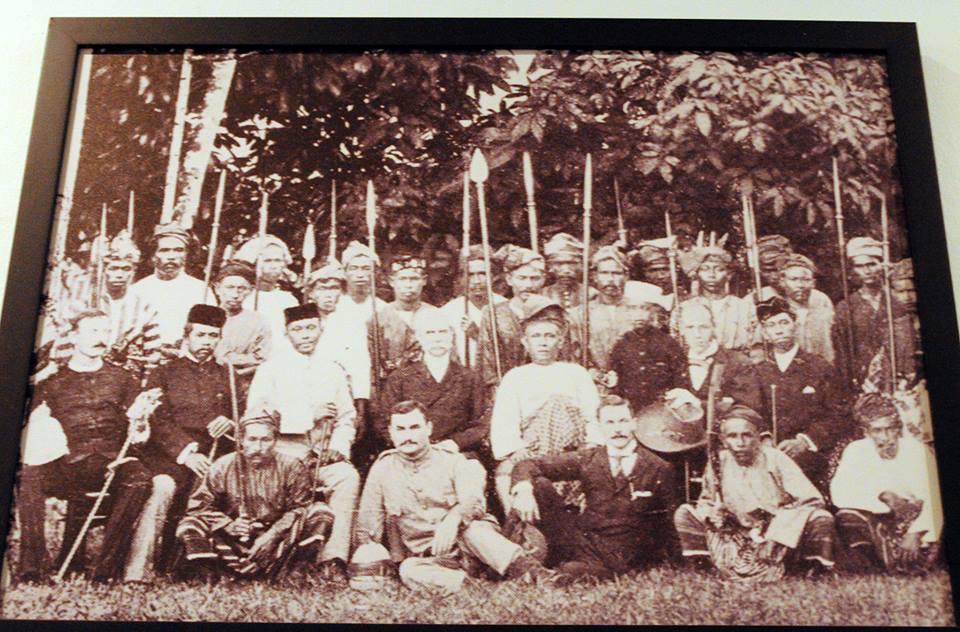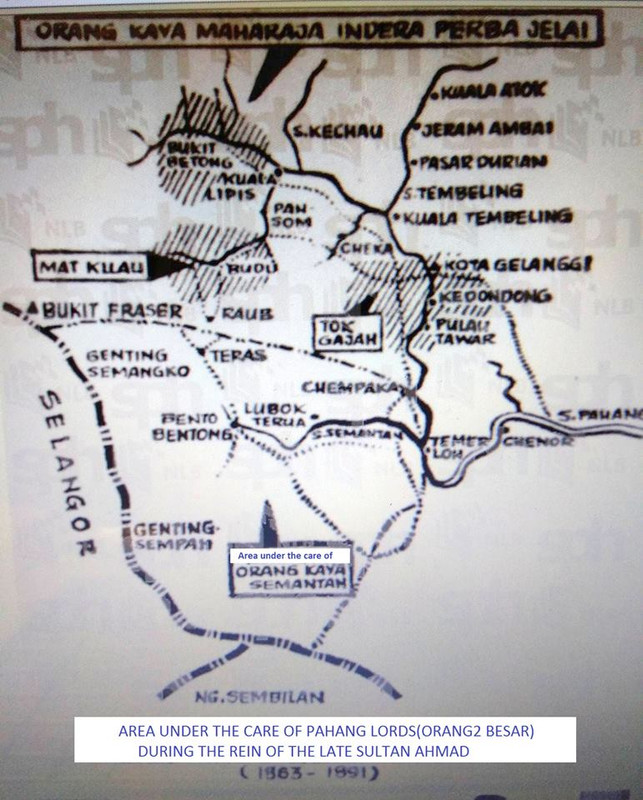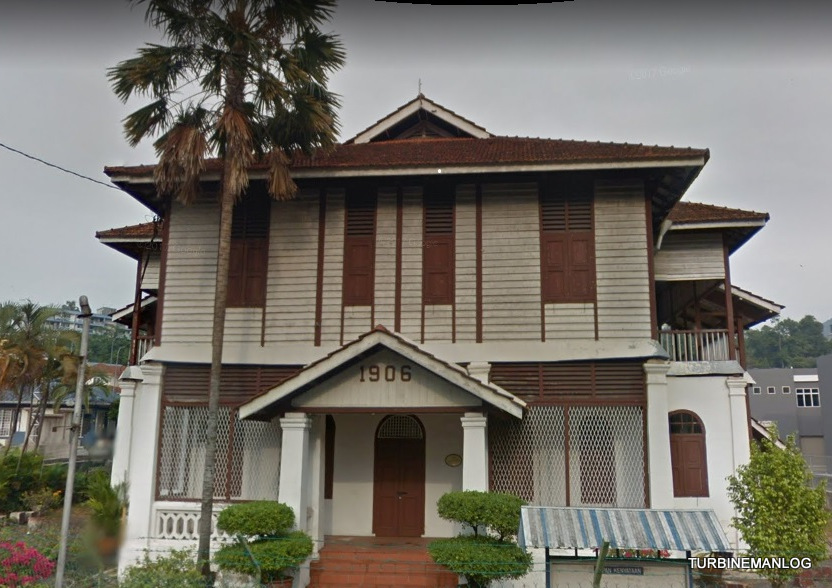the outbreak caused by the dissatisfaction of Dato Bahaman,
the local lord (Orang Kaya) of Semantan
when British advisor to the Sultan started a new tax collecting system
which deprive him of his main source of income.
This eventually lead to the rebellion which accumulated
to the first outbreak in December 1891 here at Lubok Terua
till the final clash at Jeram Ampai in 1894.

Cikgu Haji Badrul the local historian standing
by the unique old British Well build in 1890
situated behind the ruins of the
Lubok Terua Police Station(Rumah Pasong)


A map of attractions of the area,most notable is the Kuala Gandah Elephant Santuary.

As Lubok Terua was the main stopover for boats laden with goods(Gold & Tin(downstream) and Machinery & provision(upstream)
of (RAGM)Raub Australian Gold Mines and Malayan Peninsular Prospecting Company
with Godowns by the riverbank while they switch from a bigger(10t) to smaller(1t) river boat
on their way up to Bentong(via Bentong river),Raub and Tras(via Klau and the shallow Bilut River)from Pekan,
tax collections by Dato Bahaman thus was quite lucrative
and justify a building of a police station by the British here
to enforce their tax collection system.

Yours truly at the well.

a photo from the Pekan Museum,
Pekan, year 1892. Sitting from left: R.W. Duff, Police, Tuan Hitam, Tunku Mohammad, Cecil Clementi Smith, Governor of Straits Settlement , Sultan Ahmad al-Muazam Syah, Hugh Clifford, British Resident, Tunku Ali (second son of Sultan) dan Tunku Kecil (third son of Sultan) standing between Sultan and Clifford.

a rough sketch of the inner Pahang
and area controlled by individual warlords from Google.

All fence up now thanks to the effort of the local history group.



Remains of the foundation or pillars of the Lubok Terua police station
is all that is left after the area was cleared for planting oil palm.





Above is the old Raub police station build a few years after that at Lubok Terua
which would be of a smaller scale like below from the 1930-40ies base on the size of the foundation pillars.

The zinc walled godown of the Raub Australian Gold Mines and MPPC
by the riverbanks at Lubok Terua should look something like this.

Lubok Senggarat was where the first outbreak of the Pahang Rising happened.

The path to the river bend.

A signage explaining the clash in Malay,
on 16th December 1891


This merbau tree was where a chain was tied to
and laid across the river to another similar tree
on the other side.
Dato Bahaman was said to be standing waiting on the rock
on the river bend and he pulled the chain to block and overturned the
boats carrying Mr Desborough the Tax collector,Mr W P Townson the Inspector of Mines,
Mr J Townson and 12 Sikh policemen plus local boatman.
The ambush at Lubok Senggarat


The merbau tree across the Semantan River.

A mural depicting the ambush at the Kg Mempateh internet center.

Panoramic view of Lubok Senggarat.







An old house from the same era with merbau wood
and zinc roof probably from the RAGM godown,
this house was said to be the hideout of HRH the Sultan of Pahang
during early days of the Japanese occupation.


The house of Abu Samah Mohd Kassim a decendent of Dato Bahaman
who was a central committe member of Malayan Communist Party(PKM) in the 70ies.


Bullet holes riddle the walls of this house when police came and failed to arrest him
during the Communist Insurgency

Another old house, dub the house without nails.


Menhir type stone marks of an old grave here.

Fishing at the sluice gates of the Paya Lanar Irrigation Dam.





Scene by the bridge across the Semantan River at Mempateh.


4 comments:
Thank You so much Mr Lee for this journey..Now I know about Dato Bahaman & Lubuk Terua.. I really proud of you Mr Lee.. You are great Sir..
Good effort mr.lee..
I gain new knowledge today, thanks for the sharing Mr. Thomas.
Thanks for the photos and the history. Recall learning that in school but back then was more of cramping all in dates and vomiting them out again during the exam. Lol
Post a Comment